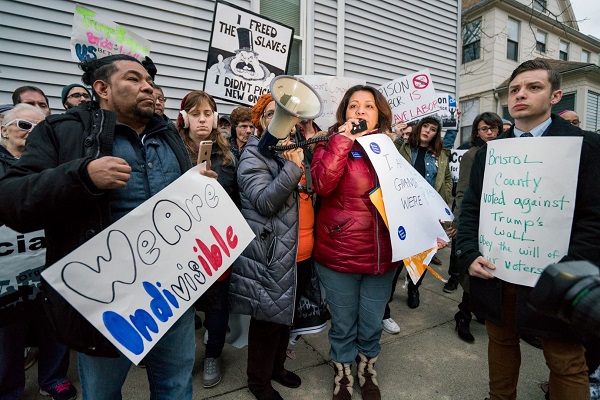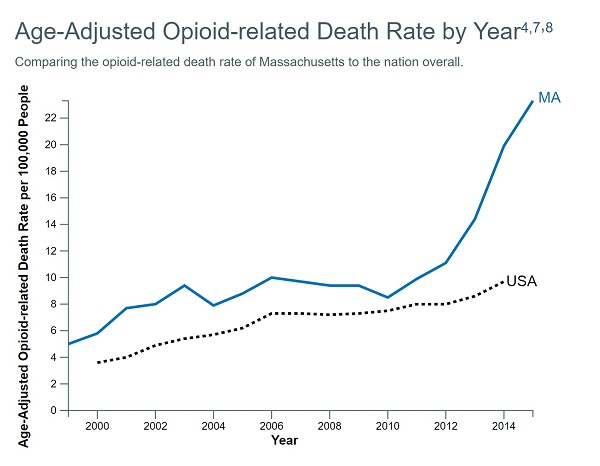Protesting a Sheriff that ran unopposed
Last week the Coalition for Social Justice and other organizations held a rally at the Ash Street Jail to protest Bristol County Sheriff Thomas Hodgson’s plan to charge inmates $5 per day and to offer up volunteer inmates to build Trump’s wall. It was a good turnout for the organizers, but what exactly did they accomplish? We covered the rally live and you can participate in the discussion here:
There was some entertainment at the rally. A Trump supporter did run past the protestors waving a “Make America Great Again” flag.
What I find perplexing is that Sheriff Hodgson ran unopposed just two months earlier and was re-elected to another 6 year term. That’s correct, a Republican Sheriff that is a staunch Trump supporter ran unopposed in a deep blue state. To be fair, it’s extremely common for politicians to run unopposed in Massachusetts. Voter apathy shots are part of the immunization regimen you get as a child in Massachusetts and it’s a lot of work getting 50 signatures to run for local office. It is much easier to be an activist on social media and once and a while come together to give speeches than to run for office.
Out of 14 Sheriffs in Massachusetts only 6 faced opposition and 8 were elected to a 6-year term without opposition. Guess what? Sheriffs wield a lot of power and since they are elected, report to the people, not a governor. Massachusetts is also the only state that elects sheriffs to 6 year terms, the vast majority of states elect their sheriffs to a 2-year term.
While at the rally, I heard people chanting “recall” and saw signs saying the same thing. Recalling an elected official that ran unopposed just two months earlier is absurd. You want to spend 100’s of thousands of dollars, if not millions, recalling a person that you could run against for free?
It’s not like Sheriff Hodgson just started talking about these issues. Between 2002 and 2004, the sheriff generated $750,000 by charging inmates $5 per day. People have known about his policies for well over a decade. Unless you are a professional protester, it makes no sense to allow him to run unopposed.
My message to the protesters would be to keep up the good fight, but you have 6 years to prepare to challenge Sheriff Hodgson. If you feel that you can do a better job – then take his job. Come up with your own policies, throw your hat in the ring and let the voters decide. Protesting is great for self esteem, but does little for changing policy or minds, especially for a man you allowed to run unopposed.

